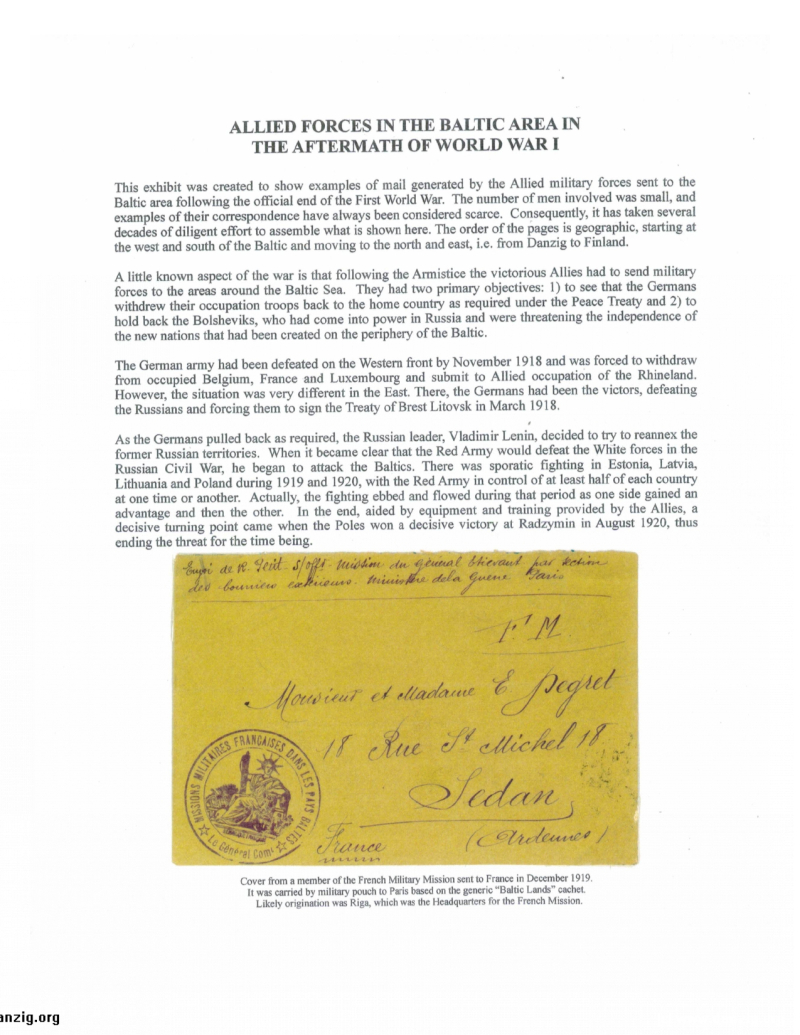
ALLIED FORCES IN THE BALTIC AREA IN
THE AFTERMATH OF WORLD WAR I
This exhibit was created to show examples of mail generated by the Allied military forces sent to the Baltic area following the official end of the First World War. The number of men involved was small, and examples of their correspondence have always been considered scarce. Consequently, it has taken several decades of diligent effort to assemble what is shown here. The order of the pages is geographic, starting at the west and south of the Baltic and moving to the north and east, i.e. from Danzig to Finland.
A little known aspect of the war is that following the Armistice the victorious Allies had to send military forces to the areas around the Baltic Sea. They had two primary objectives: 1) to see that the Germans withdrew their occupation troops back to the home country as required under the Peace Treaty and 2) to hold back the Bolsheviks, who had come into power in Russia and were threatening the independence of the new nations that had been created on the periphery of the Baltic.
The German army had been defeated on the Western front by November 1918 and was forced to withdraw from occupied Belgium, France and Luxembourg and submit to Allied occupation of the Rhineland.
However, the situation was very different in the East. There, the Germans had been the victors, defeating the Russians and forcing them to sign the Treaty of Brest Litovsk in March 1918.
As the Germans pulled back as required, the Russian leader, Vladimir Lenin, decided to try to reannex the former Russian territories. When it became clear that the Red Army would defeat the White forces in the Russian Civil War, he began to attack the Baltics. There was sporatic fighting in Estonia, Latvia, Lithuania and Poland during 1919 and 1920, with the Red Army in control of at least half of each country at one time or another. Actually, the fighting ebbed and flowed during that period as one side gained an advantage and then the other. In the end, aided by equipment and training provided by the Allies, a decisive turning point came when the Poles won a decisive victory at Radzymin in August 1920, thus ending the threat for the time being.
Cover from a member of the French Military Mission sent to France in December 1919. It was carried by military pouch to Paris based on the generic "Baltic Lands" cachet. Likely origination was Riga, which was the Headquarters for the French Mission.
Hits: 245
Added: 27/07/2025
Copyright: 2025 Danzig.org

